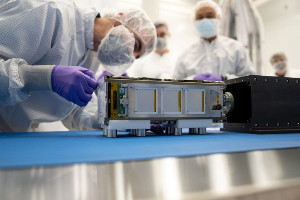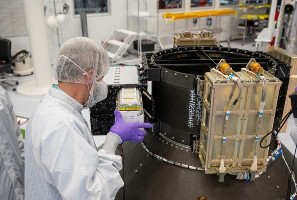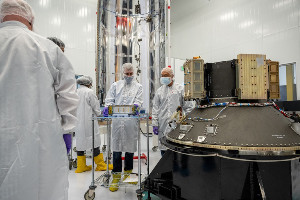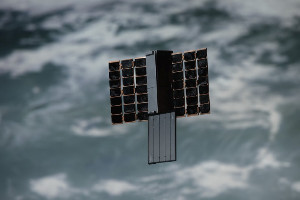| Spacecraft name | Lemur-2 151 Krywe (Adler-1, Austrian Debris Detection Low Earth orbit Reconnoiter, Lemur-2) |
|---|---|
| Spacecraft type | CubeSat |
| Units or mass | 3U |
| Status | Reentry 2023-06-10. Was operational |
| Launched | 2022-01-13 |
| NORAD ID | 51100 |
| Deployer | NLAS Mk. II [Tyvak] |
| Launcher | LauncherOne |
| Organisation | Austrian Space Forum (OeWF) |
| Institution | Non-profit |
| Entity | Academic / Education |
| Nation (HQ) | Austria |
| Nation (AIT) | UK |
| Manufacturer | AIVT by Spire |
| Operator | Spire |
| Partners | Spire, Findus Venture, Austrian Space Forum |
| Oneliner |
Study the (micro) space debris environment in LEO to complement the models by an active short-range radar as well as a deployable piezoelectric array. |
| Description |
Study the (micro) space debris environment in Low Earth Orbit to complement the space debris models by obtaining in-situ data. The debris particles will be measured by an active short-range radar provided by Spire, as well as a deployable piezoelectric array provided by the OeWF. The project has four objectives:
Spire will make their global ground station network available, including flight operations and data management, as well as procure the launch operations. The scientific data will be the bases for various research and art projects. Three remarkable partners have teamed up to fly this satellite mission: Findus Venture GmbH as a funding entity, the Austrian Space Forum as a national space research organization and Spire Global Inc., a Silicon-valley based space company operating its own fleet of satellites. AUSTRIAN PARTICLE IMPACT DETECTOR - APID The OeWF will deliver the payload and provide instrument support, but will also be responsible for the communication and education efforts of the ADLER-1 mission, as well provide administrative project services. Selected payload testing will be conducted at the certified labs of Spire in Glasgow, UK. ACTIVE DEBRIS DETECTION - SHORT RANGE RADAR |
| Results | |
| Sources | [1] [2] [3] |
| Photo sources | [1] [2] [3] |
| COTS subsystems |
|
| Subsystems sources | [1] |
Last modified: 2024-05-27




